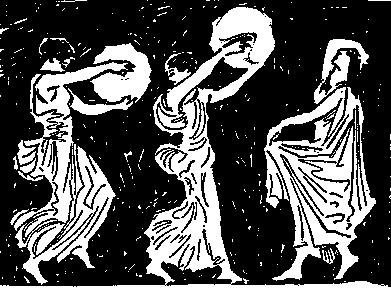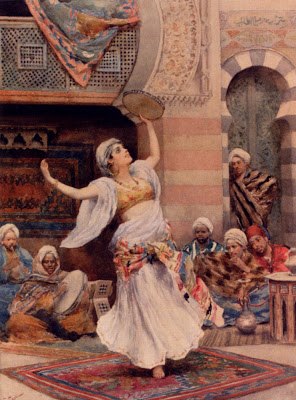BECOME MUSICAL AND GET RHYTHM
BECOME MUSICAL AND GET RHYTHM
This piece is written to help the average dancer at any level understand the use of rhythm and musicality in the dance. Today more than before most dancers learn choreography. But you have to be able to make it yours. You are not a puppet on a string. If you are lucky enough to be able to work with musicians or even work in a club doing long solo shows then you might be doing improvisation. Either way you need this information.
RHYTHM:
You have to listen to a piece over and over again before you can choreograph or improvise to it. Absorb every piece you want to dance to so you can translate it. Sit sown and let the music be your focus. Try to open a sense of awareness to the sound. Study, the different rhythms that are used and the instrumentation. Is it a keyboard, derbecki, tambourine , tar or tubl beledi giving you the rhythm? If you are unsure of the instrument etc try the following ideas.
GET THE RHYTHM

1. Find a role model: Look for someone who knows
more than you. In class find that person to go across the floor with.
Make it a project to improve your timing.
2. Research the
score: Do the intellectual work. Who wrote it? Does it have
a particular musical form? A 4/4, 6/8, A Beledi, A Masmoudi,
Folkloric, Classical, Debke. Which country does it come from?
3.
Practice dancing in silence: Find your inherent
sense of phrasing is, absent of any influence. This might allow you
to hear the phrasing a little differently or at least to get it
right. Try it!
4. Now tap into the musicality:
Pretend you are in a group, get in sync. See the space you are in.
You cannot just look at the audience and hope you are doing it right.
Feel the space. Here is where staging gets into the picture. Now work
on becoming a more musical dancer.
MUSICALITY:
Musicality like any facet of dance, can be developed and honed over time. This takes dedicated and detailed practice. It is absolutely respect for the music. Music is your partner. Or consider it a marriage. It is an interpretation of the score. It is executing on the right note and with the right accent. If the dancer feels the music, you know it. She also interprets the music with her body. That is probably the first thing you would notice. It is about a dancer's ability to dissect the rhythm.
MUSICALITY MISTAKES:
Do not let your back history with music dictate to you: Exercise restraint. Otherwise, you might rush, or just fall to a flat-line beat that you think you hear.
Do not over rely on the counts: Try just doing it. It is not just the counts. There is such a thing as movement phrases. Sing or hum the melody to figure out how the phrases fit. This helps you interpret the music.
Forget the in-between moments: Ignoring the space in-between would lead to a monotonous quality in your dance. You have to breathe. Find your internal song.
Think about musicality last:You cannot add it on later. Has to part and parcel of your piece. You have to start though by listening to the music and paying attention to the rhythm. Now you can work on the musicality.

Morwenna Assaf = Author, Choreographer
& Educator
Walid Assaf = Percussionist, &
Educator
Art/Dance Academy, USA
760-715-2276
ArabiDanseAcademie@sbcglobal.net
Comments
Post a Comment